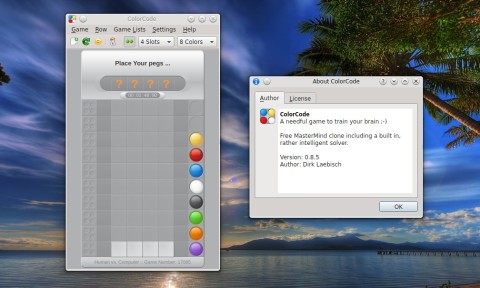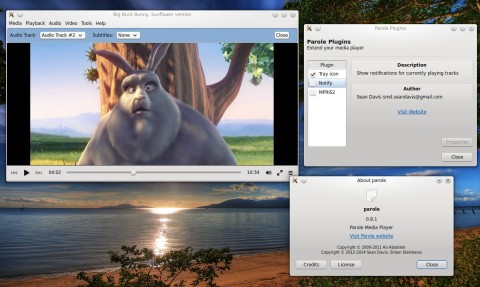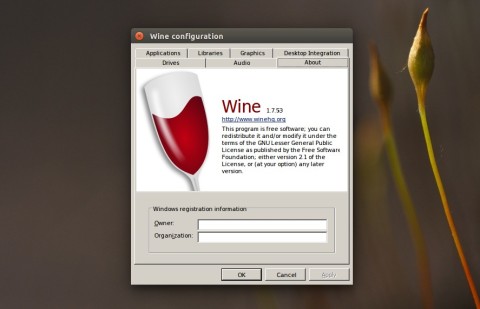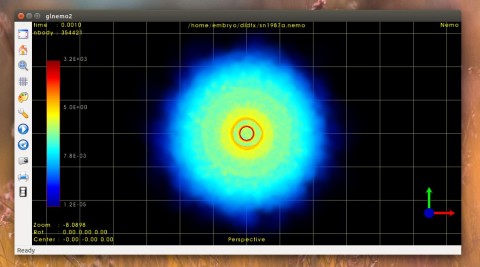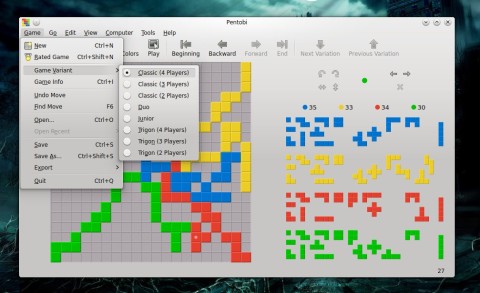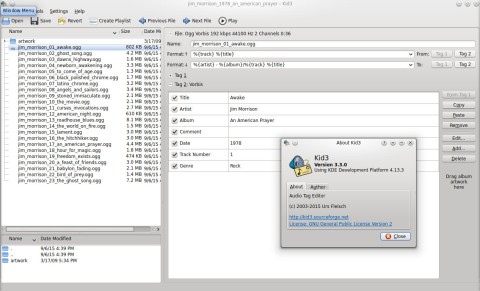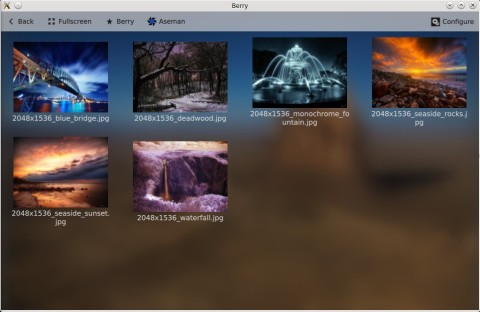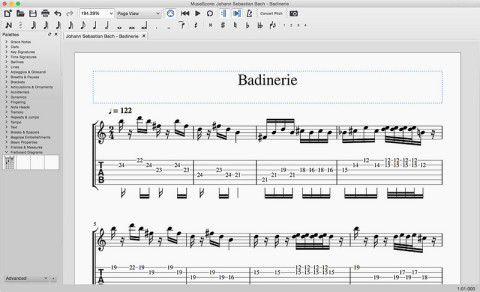ColorCode is a Mastermind game implementation for KDE and the latest version, 0.8.5, has been modified to use Qt5.
Parole is a media player for Xfce that uses GStreamer and comes with a simple, compact interface, plays pretty much anything supported by GStreamer, and has basic features such as desktop notifications, system tray integration, support for playlists and subtitles. Parole 0.8.1 was released two days ago, and the good news is that it’s going to be included in the Wily Werewolf repositories.
Wine 1.7.53 was released a few hours ago, and, as with each new version, it comes with several improvements, including support for XAudio, Direct3D code cleanups, improved OLE object embedding, further implementation of Web Services DLL, and a bunch of bug fixes.
Fresh Memory Lite is an educational application for studying foreign languages using flashcards and the Spaced Repetition method, built for KDE and having a simple to use interface.
GLnemo2 is a 3D particle visualization program with various capabilities and support for OpenGL rendered objects.
Pentobi is a board game in which players have to place pieces that are similar in shape with tetrominos on a square grid board, while trying to block the opponent from doing the same. The winner is the player who places the most number of pieces on the board when no more pieces can be placed.
Kid3 is an audio tag editor for KDE with support for editing tags in files such as MP3, Ogg Vorbis, FLAC, MPC, MP4/AAC, MP2, Speex, TrueAudio, WavPack, WMA, AIFF and WAV. The latest version, 3.3.0, brings some new features, including support for lyrics.wikia.com, chapter and table of contents audiobook frames, and a new ‘defaults’ button in the Settings window.
The TuxArena Linux Cheat Sheet has been updated, and this new version includes several parameter expansion tips and tricks for Bash, including removing and replacing substrings, extension and filename extraction, and quickly converting uppercase to lowercase characters in a text variable.
Currently this cheat sheet contains over 130 tips and tricks, from usual commands, to quick one-liners or administration commands. You can view the new version here and eventually leave a comment below if you have found a mistake or have any suggestions.
Subtitle Composer
This is KDE-based, and comes with features such as time shifting, splitting and joining subtitle lines, error checking, movie preview and a bunch of configuration options. Other functions include the ability to split or join lines depending on the | separator, insert new subtitle lines, modify times, and a spell-checker. Subtitle Composer is pretty feature-complete and will allow to modify and manipulate a good range of formats with ease. The latest version is 0.5.3, using Qt4 and blending well in KDE. The video backends that can be used for previewing videos include GStreamer, MPlayer, Xine and Phonon, however, subtitles showed in the video preview widget are not displayed correctly.
In the past I have reviewed QMPlay2, a video player using ffmpeg and the Qt 5 toolkit, which gets updated often and ships with some great features. The latest version is 15.07.12, released yesterday, and brings several fixes over the previous release.
Wine (Wine Is Not an Emulator), a software which allows Linux users to run Windows applications, has reached version 1.7.47, bringing changes such as text drawing support in Direct2D or the introduction of an implementation for HID (Human Interface Devices).
Berry is a new image viewer written in Qt, licensed under GPLv3, with a modern, simple interface and basic features.
MuseScore is a free, open-source music notation and composition application built using Qt 5, with access to thousands of music sheets, an integrated sequencer to allow for immediate playback and many more features. Version 2.0 was released today, March 25, and it represents a milestone release in the development of MuseScore, shipping with an impressive number of new features, varying from major UI changes to musical notation features like tablature support, or improved playback support.




